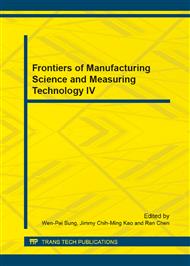p.680
p.684
p.689
p.694
p.699
p.703
p.707
p.710
p.714
A Method of Correcting Brightness Gradient in Thermal Infrared Image
Abstract:
On January 2, 2014, had the thermal infrared remote sensing image (TASI) near the drain of the Chang Jiang nuclear power station in Hainan Province plant. Due to the effect of external factors, such as the sun azimuth, the data within a single band appeared brightness gradient phenomenon. It was not conducive to the seawater temperature retrieval. Through research and analysis, established a model for thermal infrared image brightness gradient of the seawater. Based on quadratic polynomial fitting method, simulated the law of each kind of water after threshold classification, and then used the simulated compensation correction factors to correct the original image, had obtained a good application effect.
Info:
Periodical:
Pages:
699-702
Citation:
Online since:
August 2014
Authors:
Price:
Сopyright:
© 2014 Trans Tech Publications Ltd. All Rights Reserved
Share:
Citation:


